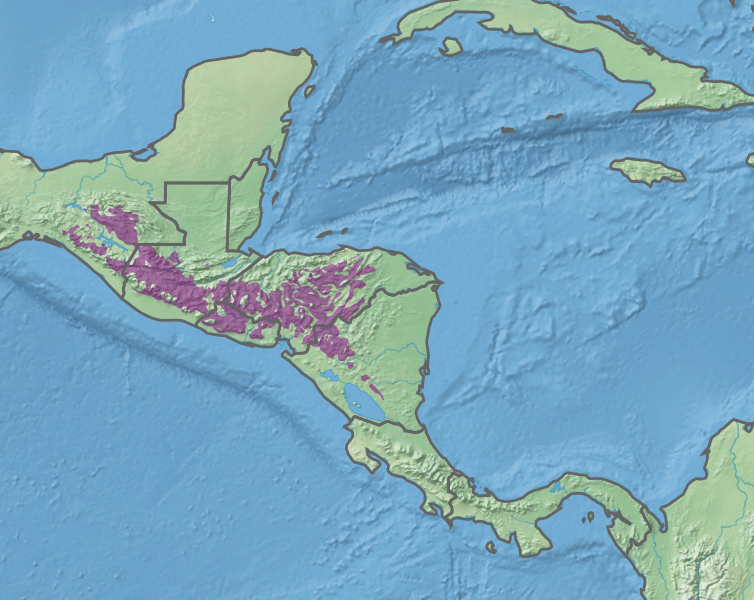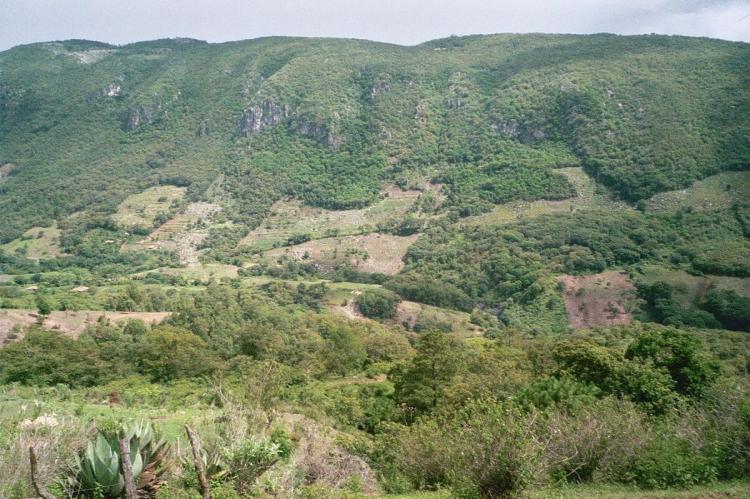Central American Pine–Oak Forests: A Haven of Biodiversity and Conservation Challenges
The Central American pine–oak forests ecoregion supports a rich assortment of conifer species. Spanning the mid-elevations of Mexico's Chiapas, southern Guatemala, Honduras, El Salvador, and small portions of west-central Nicaragua, this region is a vital habitat for various flora and fauna.
Central American Pine–Oak Forests
A Haven of Biodiversity and Conservation Challenges
Nestled between the highland cloud forests and the lowland rainforests of northern Central America, the Central American pine–oak forests ecoregion unfolds as a diverse tapestry supporting a rich assortment of conifer species. Spanning across the mid-elevations of Mexico's Chiapas, southern Guatemala, Honduras, El Salvador, and small portions of west-central Nicaragua, this region serves as a vital habitat for various flora and fauna, including the iconic resplendent quetzal.
Geographical Diversity
The ecoregion, characterized by complex topography, encompasses the Sierra Madre de Chiapas and several other mountain ranges. Positioned at elevations ranging from 600 to 1,800 meters (2,000 to 5,900 feet), the pine–oak forests mark the transition between tropical moist forests on the Caribbean slope and tropical dry forests on the Pacific slope and interior valleys. This elevation gradient contributes to a diverse tree species dominated by pine, oak, birch, and alder.
Remarkably, the pine–oak forests represent the southernmost extent of species from genera typical of temperate North America, including pine, fir, and yew. The juxtaposition of these temperate species within a tropical context creates a unique and ecologically significant environment.
Flora and Fauna
The ecoregion is a sanctuary for many mammals, ranging from the elusive jaguar and puma to the charming Central American spider monkey and mantled howler monkey. Endangered species like Baird's tapir and the greater grison find refuge in these forests. Amphibians and reptiles, with 16 endemic amphibians and 24 endemic reptiles in the Sierra Madre de Chiapas alone, contribute to the region's rich herpetofauna diversity. Notable species include the Neotropical whip snake, Celaque mushroom tongue salamander, and an endangered species of spike thumb frog.
Endemic Bird Area
The highlands of northern Central America are recognized as an Endemic Bird Area, hosting migratory warblers like the threatened golden-cheeked warbler and the azure-rumped tanager during winter. In addition, the pine–oak forests are home to many resident bird species, each contributing to the ecoregion's avian richness. Among the notable residents are:
- Bearded Screech Owl (Megascops barbarus): A master of camouflage, the bearded screech owl is a nocturnal inhabitant of the pine–oak forests. Its distinctive tufts and haunting calls make it an enigmatic presence in twilight.
- Fulvous Owl (Strix fulvescens): The fulvous owl blends seamlessly into the forested landscape with its earthy tones and haunting hoots. Its large, expressive eyes are adapted for nocturnal hunting.
- Ocellated Quail (Cyrtonyx ocellatus): The quail adds elegance with its intricately patterned plumage. Its cryptic colors provide effective camouflage in the forest understory.
- Belted Flycatcher (Xenotriccus callizonus): A master of aerial acrobatics, the belted flycatcher darts through the foliage, capturing insects mid-flight. Its distinctively banded appearance adds a splash of contrast to the green canopy.
- Pink-Headed Warbler (Cardellina versicolor): A true gem of the pine–oak forests, the pink-headed warbler is adorned with vibrant hues of pink and red. Its presence adds a burst of color to the forest understory.
- Black-Capped Siskin (Spinus atriceps): Sporting a sleek black cap and vibrant yellow plumage, the black-capped siskin is lively in the canopy. Its cheerful chirps resonate through the forest.
- Green-Throated Mountain Gem (Lampornis sybillae): A living jewel, the green-throated mountain gem is a hummingbird species adorned with iridescent green plumage. Its rapid wingbeats and vibrant colors make it a delight to behold.
- Wine-Throated Hummingbird (Selasphorus ellioti): With its namesake wine-colored throat and iridescent plumage, the wine-throated hummingbird is a dazzling inhabitant of the forest understory.
- Blue-Throated Motmot (Aspatha gularis): Known for its distinctive racket-tipped tail and vibrant blue throat, the blue-throated motmot adds a touch of exotic beauty to the ecoregion.
- Black-Capped Swallow (Atticora pileata): Graceful in flight, the black-capped swallow glides through the air with its sleek black cap and contrasting white plumage.
- Rufous-Browed Wren (Troglodytes rufociliatus): A vocal virtuoso, the rufous-browed wren fills the air with melodious songs. Its rusty plumage adds warmth to the forest environment.
- Blue-and-White Mockingbird (Melanotis hypoleucus): Mimicking various sounds, the blue-and-white mockingbird is a versatile vocalist. Its striking plumage adds a touch of elegance to the forest landscape.
- Rufous-Collared Thrush (Turdus rufitorques): With its rufous collar and melodious calls, the rufous-collared thrush is a familiar yet charming presence in the pine–oak forests.
- Bar-Winged Oriole (Icterus maculialatus): The vibrant plumage of the bar-winged oriole, adorned with contrasting black and yellow hues, makes it a striking addition to the forest canopy.
- Bushy-Crested Jay (Cyanocorax melanocyaneus): A social and intelligent species, the bushy-crested jay is often seen in groups, its striking blue and black plumage creating a dynamic display.
Challenges and Conservation Efforts
Despite their ecological importance, the pine–oak forests face significant conservation challenges. While Honduras retains a considerably intact habitat, expanding human impacts, including extensive logging for purposes such as cattle ranching and firewood, threaten the region's biodiversity. In Guatemala and El Salvador, human populations are concentrated within the ecoregion, resulting in substantial negative impacts on the remaining fragments.
Several protected areas aim to preserve the region's unique ecosystems, including Montecristo National Park in El Salvador and the internationally designated Río Plátano Biosphere Reserve in Honduras. However, challenges persist, and concerted efforts are required to balance human needs with the imperative to conserve the biodiversity of the Central American pine–oak forests.
Conclusion
The Central American pine–oak forests ecoregion emerges as a biodiversity hotspot and a conservation battleground. Its unique blend of temperate and tropical elements and iconic species like the resplendent quetzal offer a rich learning environment. Understanding the delicate balance between human activities and conservation imperatives becomes imperative to ensure the continued survival of this vital ecological treasure.

Map illustrating the extent of the Central American pine–oak forests (in purple).
